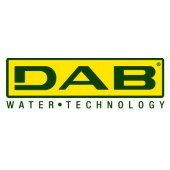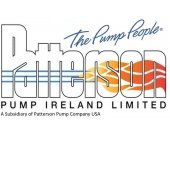Matthew Taylor, National Internal Sales & Marketing Manager at KSB, answers a selection of reader questions.
 Question:
Question:
What information do I need to give to a pump supplier/manufacturer to get an accurate quote?
Matthew Taylor:
Typically, a pump manufacturer will need the flow required along with the units of measure, and the head needed, again with the units of measure.
To get an accurate selection, as much of the information below as possible must be supplied.
What medium is being pumped and at what temperature? If it is not water being pumped, then as much information about the medium as possible should be sent, such as specific gravity and viscosity.
Any pipework details are also useful (suction and discharge).
The supplier will need details of the application (boiler feed, circulation, submersible waste water, central heating, pressurisation, pressure booster etc.).
The power supply available is an important consideration. Is 415V available? A 3-phase supply? And what is the frequency; 50Hz? The supplier will also need to know if the pump needs to be in a specific material or requires any special coatings, plus what certification is needed.
How you want to control the key parameters of the pumps (on/off, pressure, flow) is also important to understand alongside whether you want the pumps to be fixed speed or variable speed.
The minimum information required though is flow rate, head, the medium being pumped and its temperature.
Question:
Is there a limit on how many times you can stop and start a pump?
Matthew Taylor:
Yes. All manufacturers will detail the maximum stop/starts per hour in their documentation. Remember, if you have more than one pump operating on duty/standby, you can increase the stop/starts by that amount, so long as you have an auto changeover system.
Question:
Should you maximise or minimise the number of stops/starts?
Matthew Taylor: This depends on the application. On pressure boosting clean water, you would look to minimise the number of stop/starts by fitting an accumulator to the system or booster. On wastewater, you do not want the solids within the medium settling at the base of the tank, therefore the idea is to pump it away from the chamber as quickly as possible. Here you would maximise the stop/starts.
Question:
On start-up I noticed a leak from the mechanical seal on one of our pumps. Is this normal?
Matthew Taylor:
It is normal for a mechanical seal to allow some leakage. The way the mechanical seal works is to allow some of the pumped medium to get between the faces to lubricate the seal and prevent heat build-up. On start-up, there can be some leakage while the seal faces bed in, but this should stop after a short period. Again, there will always be some leakage, but if selected correctly the leakage would normally not be seen as it would vaporise into atmosphere.
Question:
Can you run a centrifugal pump with no liquid in it?
Matthew Taylor:
One of the most common forms of failure is the mechanical seal where the pump has been run without any medium being pumped. This is called dry-running. The mechanical seal needs the pumped medium to lubricate the seal faces and keep them cool. If the pump is operated with no medium, the heat will build up causing the seal to fail. In addition, if this is over a prolonged period, it can result in the shaft getting hot and causing bearings to fail. It is generally acceptable to do a quick direction of rotation test, but the pump should not be operated without being primed or vented where appropriate.
Question:
Can a submersible pump be operated un-submerged?
Matthew Taylor:
This depends on the design. Typically, submersible pumps rely on the medium surrounding the pump to cool the motor, as these motors cannot have fans fitted to them due to the fact that they are submerged. All manufacturers will specify the minimum submergence level needed to allow the pump to cool. In applications where you need the pump to operate unsubmerged, manufacturers have solutions such as jacketed pumps, or dry well pumps that can be installed in a separate chamber. Speaking to the pump’s manufacturer for advice is always advisable.
If you have questions you’d like to put to a pumping systems expert, email them to flow's editor at chris@flowmag.co.uk
Back to Latest News



2.jpg&w=170&h=170)
1.png&w=170&h=170)
3.png&w=170&h=170)






